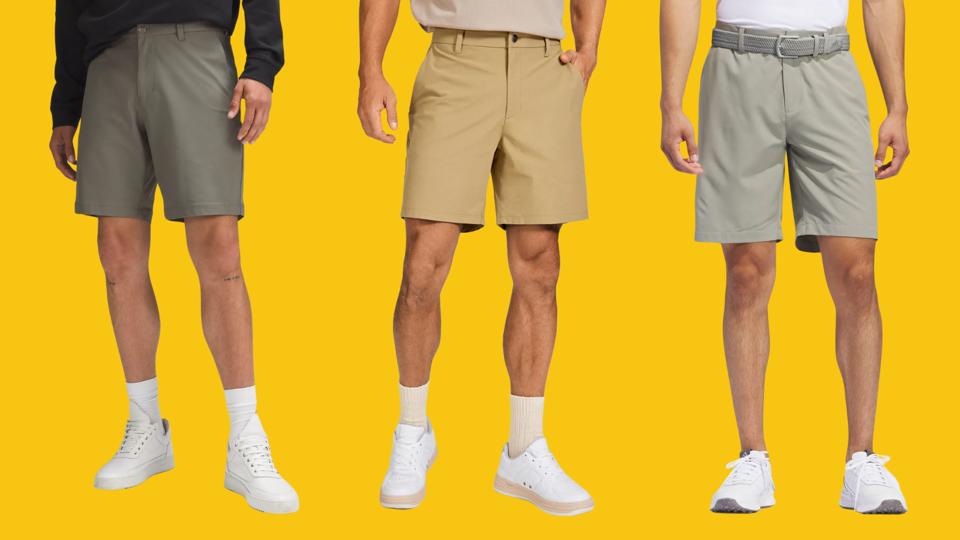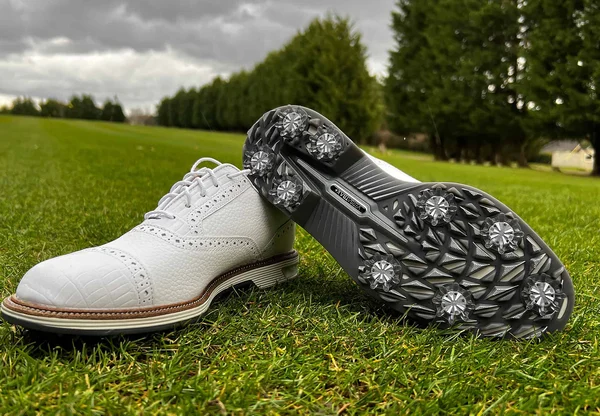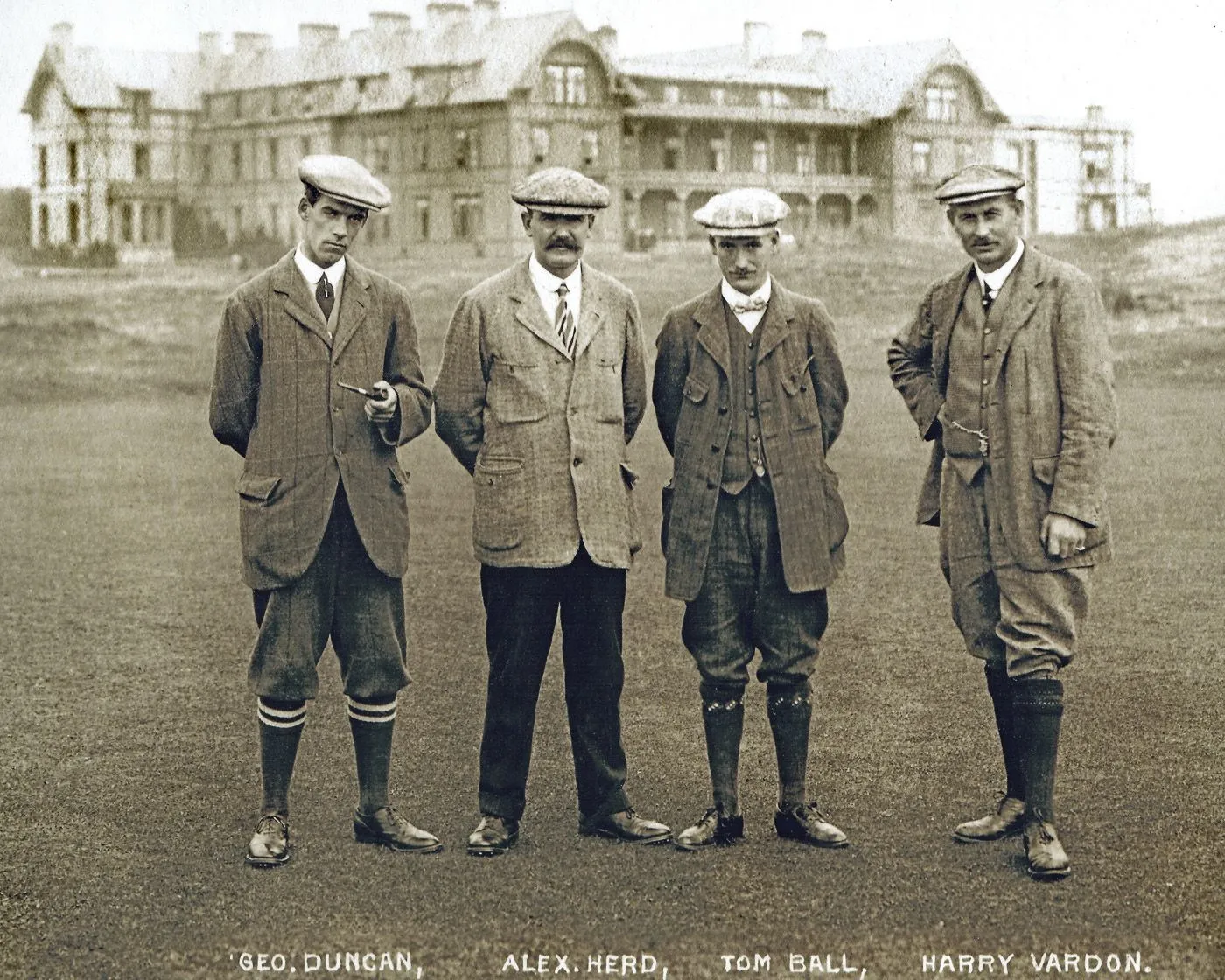DailyGolfIQ
How to Dress For Golf
I’ve been playing golf for as long as I can remember. My dad used to take me out to the course when I was just a kid, and back then, I didn’t realize how much what you wear can impact your game. At first, I’d throw on heavier shirts or tighter dress pants, and I’d be sweating halfway through the front nine or struggling to swing freely. Over time, I learned that comfort and confidence go hand in hand in golf and your outfit plays a huge part in both.
Knowing how to dress for golf isn’t about following strict rules; it’s about respecting the game, looking professional, and feeling comfortable enough to perform your best. Whether you’re at a private course or a casual muni, the right golf apparel helps you blend in, stay cool, and even improve your swing. I always make sure to wear a collared shirt and a good pair of golf shoes. Trust me, slipping in wet conditions will mess up your round fast.
At the end of the day, the message is simple: look good, feel good, play good. Dressing confidently and comfortably lets you focus on what matters most, enjoying the game.

Shirts — Collars, Materials, and Colors
If you’re trying to figure out how to dress for golf, start with the most important piece, the shirt. Most courses expect a collared polo, and for good reason. It’s part of golf’s tradition and keeps you looking professional on the course.
Over the years I’ve learned that the material of your shirt matters just as much as the look. Cotton might feel fine at first, but after a few holes under the sun, it gets heavy and sticky. Moisture-wicking performance fabrics, on the other hand, breathe better and stretch with your swing. If you’ve ever felt your shirt cling to your back halfway through the round, you know why this makes such a difference.
Color-wise, keep it simple and clean. Neutral tones like white, navy, or gray always fit in, but don’t be afraid to show a bit of personality with subtle stripes or soft pastels. As long as it’s tasteful and fits comfortably, you’ll look confident and stay cool, two key parts of dressing right for golf.

Pants & Shorts — Fit and Etiquette
Once you’ve got the right shirt, the next step in how to dress for golf is picking the right pants or shorts. This is where comfort and mobility really make or break your round. When I was younger, I used to wear dress pants that looked nice but felt tight every time I swung. It didn’t take long to realize that stiff clothing equals stiff movement, and that shows up in your swing.
Most courses are fine with khaki pants or tailored golf shorts, as long as they’re clean, not too baggy, and have belt loops. Jeans, gym shorts, or anything overly casual usually don’t make the cut. Lightweight materials like stretch-fit or moisture-resistant fabric are perfect because they move with you instead of against you.
A good rule of thumb is to aim for shorts that fall just above the knee. Anything shorter looks unprofessional, and anything longer can restrict motion. If the course feels more formal or private, play it safe and go with full-length pants, it’s always better to be slightly overdressed than underdressed on the course.
The right pair of pants or shorts won’t just help you look the part; they’ll keep you focused, comfortable, and confident through every swing.

Shoes — Spikes, Comfort, and Traction
If there’s one part of how to dress for golf that beginners underestimate, it’s footwear. The wrong shoes can ruin your balance, especially when the ground is wet or uneven. I learned that the hard way one rainy morning, I slipped mid-swing and spent the rest of the round focusing more on staying upright than on hitting good shots.
Golf shoes aren’t just for looks. They’re designed for traction, balance, and comfort over long walks and repeated swings. Most courses recommend shoes with soft spikes or spikeless soles because they grip the turf without damaging greens. Metal spikes are rare nowadays and often banned, but soft spikes keep you stable while still being course-friendly.
If you’re just getting started, invest in one good pair of lightweight, waterproof golf shoes. They’ll keep your feet dry, improve your footing, and give you more confidence in your swing. I always tell new golfers you can get away with a cheaper polo or shorts, but never skimp on your shoes.
The right pair won’t just help your game; they’ll keep you comfortable for every step of the round.

Accessories — Hats, Belts, and Outerwear
Once you’ve got your main outfit figured out, accessories are what pull everything together and they matter more than most people think. When you’re deciding how to dress for golf, think about the small details that make a big difference during a round.
A hat is the most common golf accessory, and for good reason. It keeps the sun out of your eyes and helps you stay focused while lining up shots. I usually wear a forward-facing cap or a bucket hat, depending on the weather. Some courses are more traditional, so wearing your hat backward or skipping it entirely might not fit the setting, but if it’s a casual day or cloudy round, I sometimes go without one.
Belts are another subtle but important part of the look. A simple black, brown, or white belt ties your outfit together and keeps you looking sharp, especially since most golfers tuck in their shirts.
Then there’s outerwear, something most beginners forget about. Heavy jackets or hoodies can restrict your swing, but a lightweight pullover or windbreaker made for golf keeps you warm without limiting movement. The key is flexibility and comfort clothes that move with you, not against you. The right accessories show you care about the details and help you feel ready for whatever the weather (or the course) throws your way.

Why Does A Dress Code Matter?
A lot of new golfers wonder why the sport cares so much about clothing. The truth is, golf’s dress code has been around for over a century, it started in the late 1800s when the game was played mostly at private country clubs in Scotland and England. Back then, golfers wore formal clothes like ties, jackets, and flat caps. The tradition carried over as golf spread to the U.S., symbolizing respect, sportsmanship, and belonging to a well-kept course.
Today, the game has relaxed, but that sense of respect still exists. Learning how to dress for golf isn’t about strict rules, it’s about carrying on that tradition of respect for the course, your playing partners, and the game itself. Dressing appropriately shows that you care about where you’re playing and who you’re playing with.
But it’s not just about etiquette anymore, performance matters, too. Modern golf apparel uses materials that help you move better, stay dry, and play comfortably. What started as a symbol of tradition has evolved into gear designed to help you perform your best.
Personally, I’ve found that when I’m dressed right, I play better. It’s not just about appearance, it’s mindset. When you step onto the first tee feeling confident, you play with more focus and energy. Golf is as mental as it is physical, and your outfit plays a small but real part in that balance.

Simple Tips Before You Play
Learning how to dress for golf isn’t about following a bunch of strict rules, it’s about finding the balance between tradition, comfort, and confidence. Every course has its own standards, but as long as you look neat, wear a collared shirt, and choose clothes that move with your body, you’ll fit right in anywhere you play.
The real takeaway is simple: look good, feel good, play good. When you’re comfortable in what you’re wearing, you focus better, swing easier, and carry yourself with more confidence on the course.
Golf might have started as a game of quiet tradition, but it’s evolved into one that welcomes everyone, and dressing the part is your way of showing you respect both the sport and yourself. Whether it’s your first round or your hundredth, take a minute before every game to make sure you feel ready. Because when you step onto that tee box looking the part, you’re already halfway to playing your best round yet.

Nick Persichetti
Digital Marketing & eCommerce Student at Western Michigan University
Nick has been playing golf since childhood and shares practical tips for beginners learning the game.